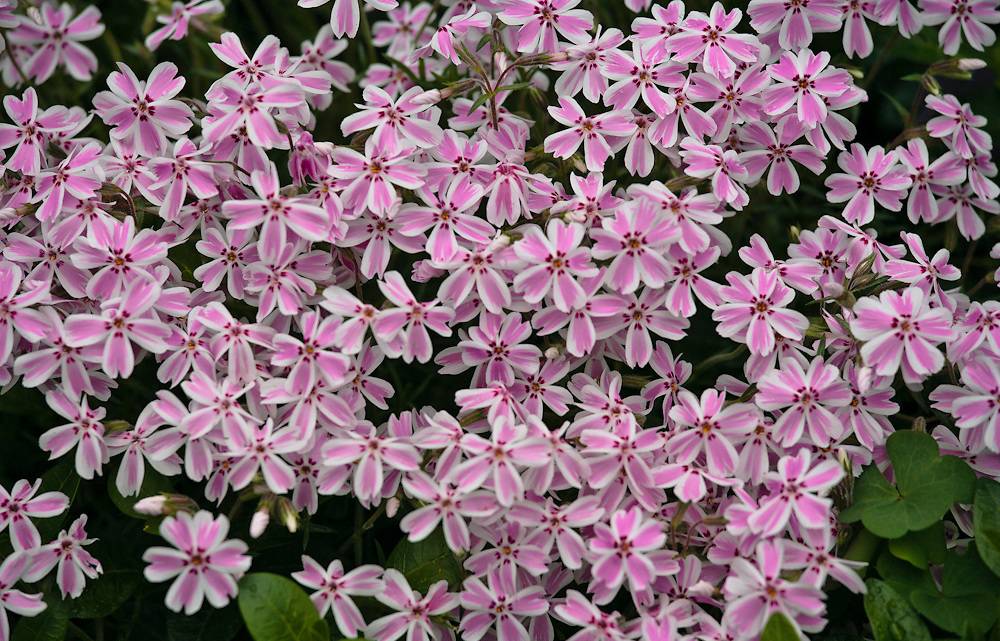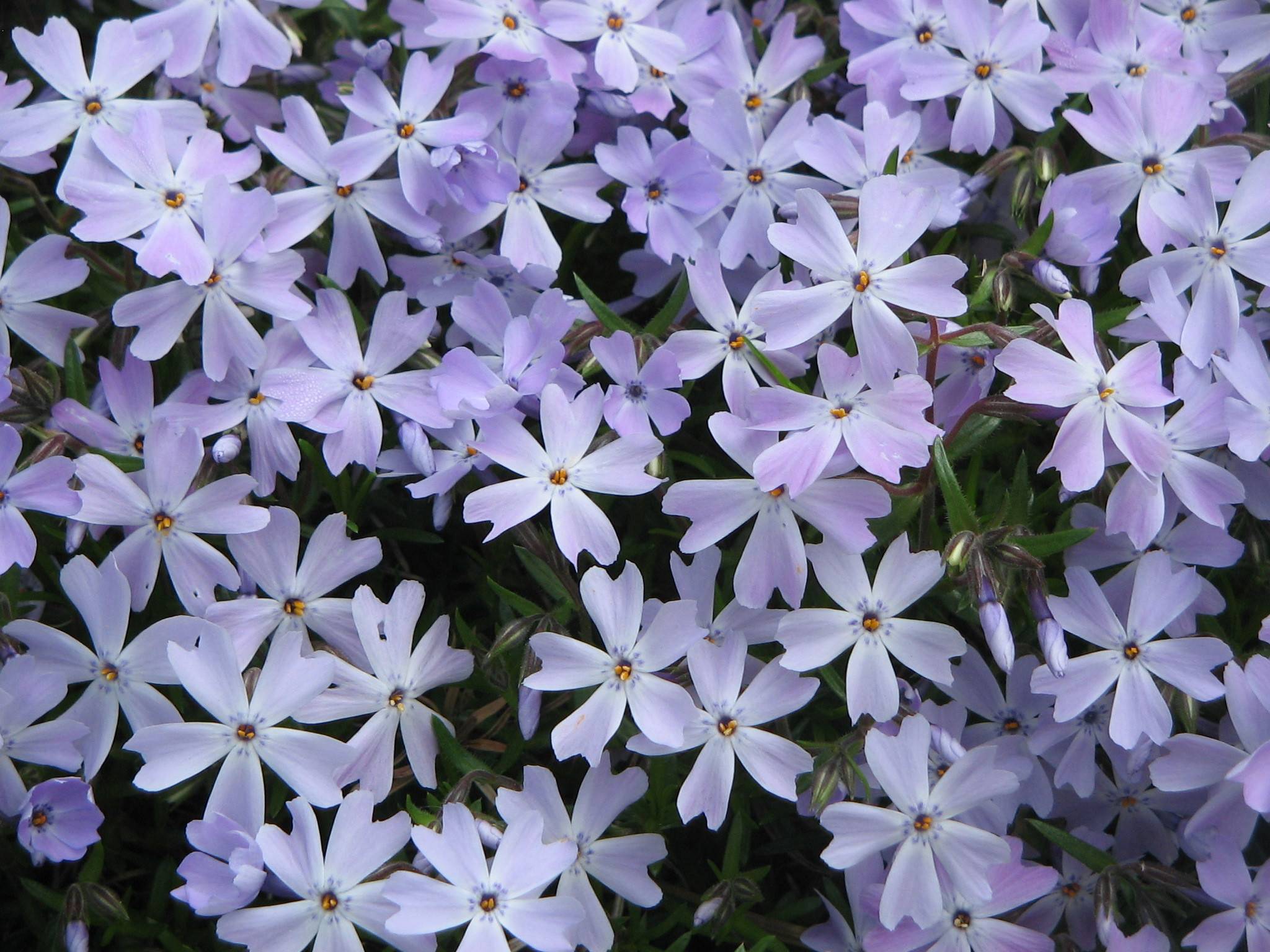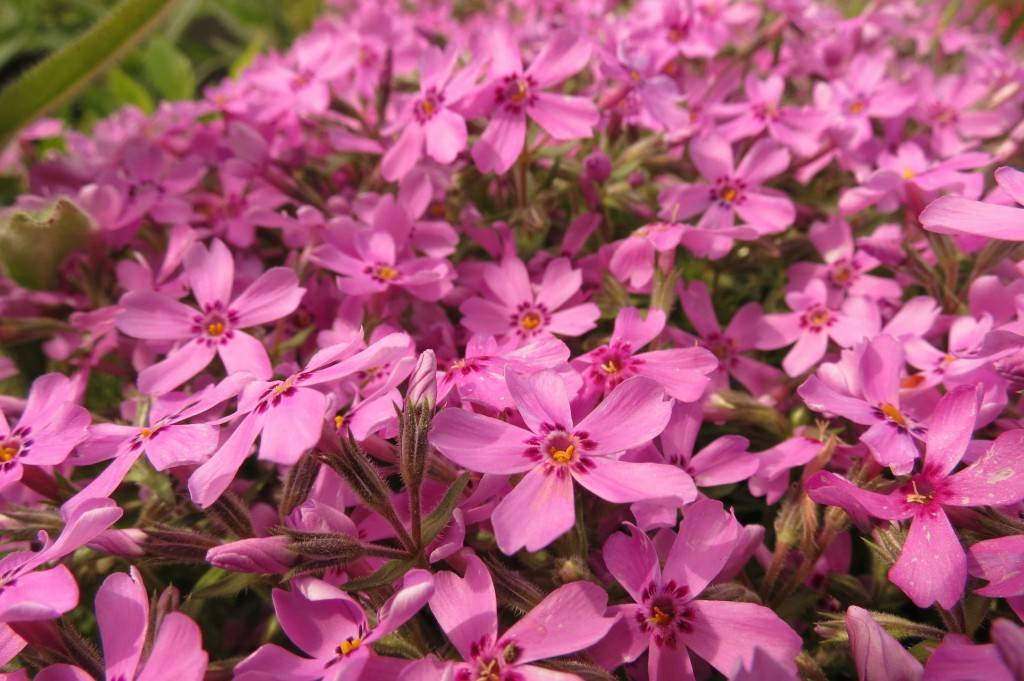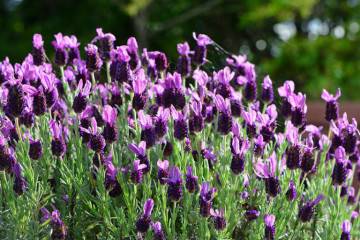Phlox subulate: planting and care in the open field
Content:
- Botanical description of the plant
- Types and popular varieties of subulate phlox
- Phlox subulate and spread apart - what is the difference
- Application in landscape design
- Possible breeding methods
- Landing in open ground
- Choosing a place and soil for planting
- How to plan a flower bed
- How to care for flowers
- How to care for phlox at home
- Possible diseases and pests
Not everyone likes to tinker in the ground, dig potatoes, grow dill and parsley. But everyone wants their local area to look presentable. One of the best options is to sow everything with a lawn or cover everything with artificial. But it is quite expensive and troublesome. There is another way - to plant a low subshrub creeping along the ground, which has received the scientific name subulate phlox.
Botanical description of the plant
Phlox subulate is a perennial ground cover shrub. Botany classifies it as a member of the Sinyukhov family, and from afar it looks like a blooming lilac creeping on the ground.
The main characteristics are as follows:
- Depending on the variety, phlox can be either 5 cm in height or 17 cm, but not more.
- The stems do not tend to rise at all. They consist of many branches, some of which again go into the ground and put down additional roots there. The maximum length of one branch is 50 cm. The color of the stems is green, and the maximum thickness is up to a centimeter.
- The leaves on the stems are quite densely arranged to each other, thereby creating a thick "carpet". The shape of the leaves resembles an awl, which is reflected in the name of the plant. The leaves are narrow, rigid, opposite and rarely grow more than 2 cm.
- The roots of the plant go deep into a maximum of 15 cm. But it has many appendages, which allows the phlox to receive the required amount of minerals.
- The most important thing is flowers. In fact, they are small, but due to the large number they create a beautiful picture. Each flower is no more than 2-2.5 cm in diameter. Consists of 5 petals forming a flat corolla. There are different colors: white, cream, pink, purple and blue shades.
Phlox blooms only once a year, but for a long time. Sometimes, in a particularly hot season with good rainfall, it can bloom twice. The first flowering occurs in late spring - early June. In the presence of the above factors, it can additionally bloom in mid-September, emitting a rather pleasant aroma.
Among the people, you can hear other names of the plant - moss clove, creeping phlox, carpet phlox.
Types and popular varieties of subulate phlox
Phlox subulate belongs to ornamental plants and has long been used in landscape design as an effective way to cover large areas with a minimal budget. For those who decide to acquire a carpet shrub, it is worth paying attention to the most popular varieties.
- Сandy stripes.
Opens the top most popular variety Candy Stripes. The cultivar has received a basic white color, but right in the middle of each petal is a wide strip of pink hue. Bushes rarely rise above 10 cm, bloom for a long time and abundantly.
- Еmerald cushion blue.
Among domestic flower lovers it is known as Majori. Depending on the seeds, they will delight you with several shades of flowers: it can be bright purple, violet or pale blue.
The flowers grow very densely and densely, therefore, during flowering, the bushes form a continuous carpet, where not even green veins can be found.
- Еmerald pink.
Emerald Pink is characterized by bright pink flowers up to 3 cm in diameter. Although they do not grow as densely as Kuchon Blue, the diameter and width of the petals compensates for everything.
- Scarlet flame.
The flame in translation means "fiery", which perfectly characterizes the color of the petals, which grow up to 2.5 cm in diameter. The height of the bushes is about 15 cm, and the main feature of the variety is that it is guaranteed to bloom twice a year.
For those who will be engaged in the arrangement of the land plot on their own, the designers advise to select a variety to match the color of the house. It is better not to sow large areas with too bright shades, but save them for small flower beds.
This is "Spread", "Panicled", "Drummond's Annual." Those gardeners who are interested in full-fledged phlox bushes can pay attention to the Ural Fairy Tale variety bred in the Urals, which grows up to 80-90 cm and blooms with delicate pink petals that form a “star” shape.
Phlox subulate and spread apart - what is the difference
When inexperienced gardeners do not find the styloid phlox, they often take the splayed phlox. Even sellers claim that they look almost the same, but in fact, these types have many fundamental differences:
- The main difference is the height. Subulate will never be higher than 20-25 cm, and even such indicators are extremely rare. But the spread-out ones can easily "stretch" up to 40 cm. For example, many plant Raving Beauty in the hope of getting something similar to Emerald Pink, but later become disappointed.
- The choice of shades in the splayed ones is minimal, while in the subulate there are more than 30 of them.
- The spread-out varieties, in principle, can hardly be called perennial in domestic latitudes - they do not tolerate cold well. And if the winter turned out to be windy and snowless, then they will almost certainly freeze out.
- Subulate, on the other hand, are not only not whimsical to temperatures, but also calmly get along in poor soil, while splayed ones need a special composition of the earth and careful care.
So, if the site is planted for more than one season, it is better to search or order seeds of the awl-shaped variety on the Internet.
Application in landscape design
It is worth noting that the aforementioned method of simply sowing the area with phlox is quite primitive. In fact, landscape designers have long been using phlox in various compositions, effectively including them in flower beds, wrapping them around fences, decorating decorative fountains, waterfalls, etc.
Phlox blends well with the same lawn grass and is often formed together with decorative stone masonry.
In recent years, sowing whole fields of phlox has become quite popular. At the same time, several different types and shades of perennials are combined to form a variety of patterns.
Possible breeding methods
An ornamental plant can be propagated in 4 ways:
- Seeds. This method is not very popular due to the small number of seeds in flowers. Usually the bush itself reproduces by seeds fallen into the soil. If you managed to get phlox seeds, they should be planted in a greenhouse or cellar somewhere in the middle of autumn.
- The most common way is to divide the bush. A part of the bush, which has its own roots, is separated and planted in the right place. The most favorable time is April.
- Cuttings. Since the shrub takes root quite well, you can plant a cutting with small roots. They can be small parts left over, for example, after division.
- Rooting. An effective way for creeping bushes. The new branch is simply sprinkled with earth. There it will take root and become the center of a new bush.
In view of the good survival rate, all methods are quite effective and problems with the styloid variety usually do not arise.
Landing in open ground
There is nothing special about the landing process. A landing hole is dug. Drainage, humus, ash are poured (optional). After the cuttings or seedlings are dipped in Kornevin solution and planted at a distance of about 30 cm from each other.
Choosing a place and soil for planting
Phlox loves sunny places. But even in the shade it will feel normal. The main condition is less moisture. In wetlands, the plant dies.
If possible, it is best to dilute the soil with sand. A drainage type of soil is welcomed, however, this item is not required due to the unpretentiousness of the plant. The only thing worth considering is that if you plan to plant in black soil, which will often be moistened, you can not really count on flowering.
Also worth noting is the plant's love of the wind. Phlox should not be planted between tall plants or walls, because of which air masses will not pass through it.
How to plan a flower bed
A naturally beautiful plot or flower bed will not work if you do not plan everything in advance.
Considering that phlox belongs to creeping shrubs, it needs to be assigned an appropriate role. If you are planning a flower bed in which there will be nothing except phlox, then there is nothing special to plan, you just need to plant in accordance with the recommendations.
But if the flower bed is located on an artificial elevation, next to the fountain and other elements, it is important to give the phlox its due place. For example, a popular solution when the subulate framing the flower bed around the perimeter. If the flowerbed rises, it beautifully beats the shape and continues to creep down.
How to care for flowers
Choosing an awl-shaped phlox as a decoration, you need to understand that planting and care in the open field requires certain knowledge. The plant grows and multiplies quite quickly, so it is important to guide it in the right direction and prune it in time. Complete plant care is as follows.
- Loosening, mulching
The best time for mulching is autumn. Then, in the summer, it will be possible to do without fertilizers.
During loosening, it is recommended to add a little humus and ash, then the high-quality development of the plant is guaranteed. It is better to perform the procedures after weeding and watering.
- Shelter for the winter
Phlox must not be covered with foil!
It is enough to create a small pillow of leaves or dried grass. For regions with rather harsh winters, it is ideal to fertilize the plant with horse manure or humus. This will protect the roots from freezing. In general, it is the styloid phlox that tolerates even severe frosts quite calmly, which cannot be said about many of its other varieties.
- Pinching, pinching, pruning
In order for the shrub to bloom annually, it is important to prune on time.
Experienced gardeners tidy up the bushes only in early spring and late summer. In the fall, this is no longer worth doing, since you can unknowingly cut off the flower buds that are formed for flowering next year. It is advisable to cut the bush immediately after flowering.
How to care for phlox at home
Phloxes also get along well in indoor conditions.
In order for the plant to feel good at home, it is necessary to provide a sufficient amount of light (it has its very place on the windowsill). It is also important to provide at least some air movement.
As winter approaches, the plant should be moved to a cool place, while the amount of sunlight will not play a big role. Phlox will be equally well on an unheated balcony or in a basement.
For the rest, you should adhere to the same recommendations as for growing outdoors.Prune and fertilize in time.
Possible diseases and pests
For phlox, caterpillars and powdery mildew are dangerous.
Pests damage the stems, causing the leaves to turn brown and curl into buds. Seeing such an effect, all damaged areas must be immediately removed and postponed with planting new bushes in this place.
Only a properly chosen planting site can prevent the appearance of diseases and pests.
Phlox subulate refers to creeping perennial shrubs. There are many types of plants, so you can use different interesting ideas to decorate the site. Phlox is unpretentious - with the right choice of planting site and proper care, it will bloom twice a year.























